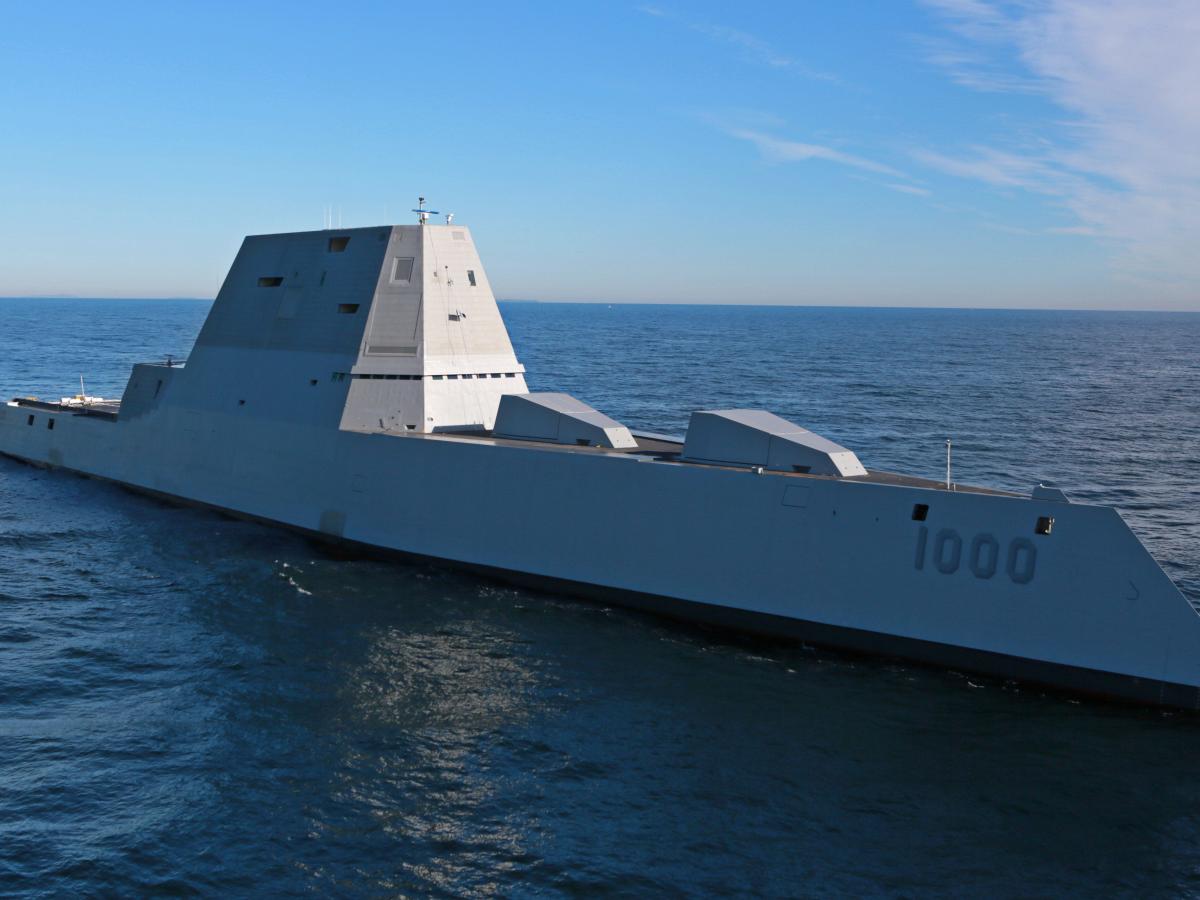
www.yahoo.com
A $4.4 billion US destroyer was touted as one of the most advanced ships in the world. Take a look the USS Zumwalt, which has since been called a 'failed ship concept.'
Experts consider the ship a failure, lacking many important features like anti-ship missiles and anti-submarine torpedoes.
Science & Tech
The USS Zumwalt is the largest destroyer in the world.
The US Navy's three Zumwalt-class ships cost about $22.4 billion in research and development.
But one expert says that despite the expense, the Zumwalts are a "failed ship concept."
The USS Zumwalt is the lead ship among three Zumwalt-class destroyers. It is the largest destroyer in the world.
The USS Zumwalt was named after Adm. Elmo Zumwalt, the youngest chief of naval operations in US history. The ship is a guided-missile destroyer, which means its main purpose is to provide antiaircraft support to the US Navy's fleet.
The ship's construction began in October 2008. It was launched in October 2013 and put into commission by the US Navy in October 2016.
The Navy has two other Zumwalt-class destroyers: the USS Michael Monsoor and the USS Lyndon B. Johnson.
The first of the three Zumwalts built, the USS Zumwalt, cost $4.4 billion, making it the Navy's costliest destroyer at the time.
The ship cost twice as much as some of the Navy's most powerful ships, its Arleigh Burke-class destroyers, according to the Associated Press.
The three Zumwalt-class destroyers cost about $22.4 billion in research and development, according to Bloomberg. General Dynamics, the owner of the shipyard Bath Iron Works, which built the USS Zumwalt, constructed a $40 million facility just to accommodate the building of the massive ships.
The USS Zumwalt is one of the largest surface combatants in the world: It has a displacement of 14.7 tons.
The ship's "knife-like" bow is said to make it more stable in heavy seas compared with other surface combatants like destroyers and cruisers, according to Defense News.
The 600-foot ship can accommodate 158 crew members, according to Naval Technology. It has a range of 100 nautical miles and a maximum speed of 30 knots.
The ship is powered by Rolls-Royce MT30 gas turbines and Rolls-Royce RR4500 turbine generators, according to AeroWeb.
he Zumwalt produces about 78 megawatts of power, similar to the energy generated by a nuclear-powered aircraft carrier, according to the US Indo-Pacific Command.
The ship's sensors include a multifunction radar, according to Naval News. Per the publication, it also has 80 advanced vertical launch cells for specific types of missiles.
But the Zumwalts have been plagued by problems.
Despite their cost, the Zumwalts have been plagued by equipment problems. Soon after its commissioning in 2016, the USS Zumwalt broke down in the Panama Canal. The second ship in its class, the USS Michael Monsoor, failed during sea trials the following year.
As a 2018 report from Military Watch Magazine noted the Zumwalts "suffered from poorly functioning weapons, stalling engines, and an underperformance in their stealth capabilities, among other shortcomings."
"They have almost entirely failed to fulfill the originally intended role of multipurpose destroyer warships, while the scale of cost overruns alone brings the viability of the program into question even if the destroyers were able to function as intended," the outlet said.
The Zumwalts lack several vital features, including anti-ship missiles, anti-submarine torpedoes, and long-range area-air defense missiles, the military expert Sebastian Roblin wrote in a 2021 National Interest article. Roblin called the destroyers an "ambitious but failed ship concept."
And, noted Roblin, their weaponry wasn't cheap. The ship's long-range land-attack projectile guided shells cost roughly $800,000 each — about the same price as a cruise missile. The munitions were eventually canceled, considered too pricey to merit producing.
Roblin said the Zumwalt was produced based on "unrealistic" estimates that banked on minimal cost, despite coming in 50% over budget.
























































